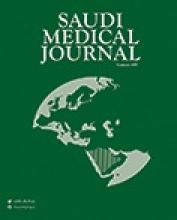Abstract
OBJECTIVE: To search for the opportunistic and other pathogenic intestinal parasites in dialysis patients, and to compare the methods used for diagnosis.
METHODS: This is a randomized study, which recruited participants from the dialysis patients. The study was carried out in the Department of Microbiology, Research Hospital, School of Medicine in Kocaeli University, Kocaeli, Turkey between June 2012 and March 2013. One hundred and forty-two patients were diagnosed with an end-stage renal failure, which underwent dialysis, and 150 healthy volunteers were enrolled in the study. Native-lugol, formol ethyl acetate sedimentation method, trichrome, modified trichrome, acid fast, and Calcofluor staining methods were applied to the stool samples. For the diagnosis of Cryptosporidium spp., Giardia intestinalis (G. intestinalis), and Entamoeba histolytica (E. histolytica), commercially available ELISA kits were used, which detect antigen in the stool.
RESULTS: Parasites were found in 62 of the dialysis patients (43.7%) and 19 of the control group (12.7%). The most encountered parasitic agents in the dialysis patients were Blastocystis spp. (23.9%), G. intestinalis (8.5%), E. histolytica (2.1%), Microsporidia spp. (2.1%), and Cryptosporidium spp. (2.1%). The parasite detection rate of the formol ethyl acetate sedimentation method was found to be higher than native-lugol (p<0.05).
CONCLUSION: To protect the dialysis patients with diarrhea from parasitic infections, it is important to carry out interval stool examinations with trichrome, modified trichrome, acid fast, and Calcofluor staining methods, and the ELISA method, which detects antigen in the stool.
- Copyright: © Saudi Medical Journal
This is an open-access article distributed under the terms of the Creative Commons Attribution-Noncommercial License (CC BY-NC), which permits unrestricted use, distribution, and reproduction in any medium, provided the original work is properly cited.






